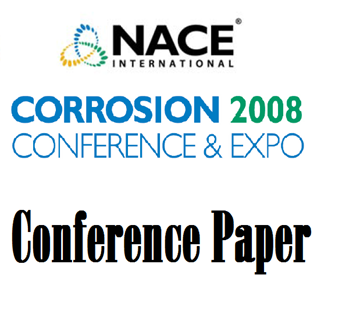Search
51312-01461-Corrosion of Carbon Steel in Waters of Varying Purity and Velocity
Also Purchased
08271 Effects of Oxygen, Temperature and Salinity on Carbon Steel Corrosion in Aqueous Solutions; Model Predictions versus Laboratory Results
Product Number:
51300-08271-SG
ISBN:
08271 2008 CP
Publication Date:
2008
$20.00
51312-01464-THEED DEGRADATION AT DCP MIDSTREAM EAST TEXAS PLANT
Product Number:
51312-01464-SG
ISBN:
01464 2012 CP
Publication Date:
2012
$20.00
51312-01479-Direct Assessment Data Categorization Integration and Risk Indexation - A Novel Approach
Product Number:
51312-01479-SG
ISBN:
01479 2012 CP
Publication Date:
2012
$20.00




